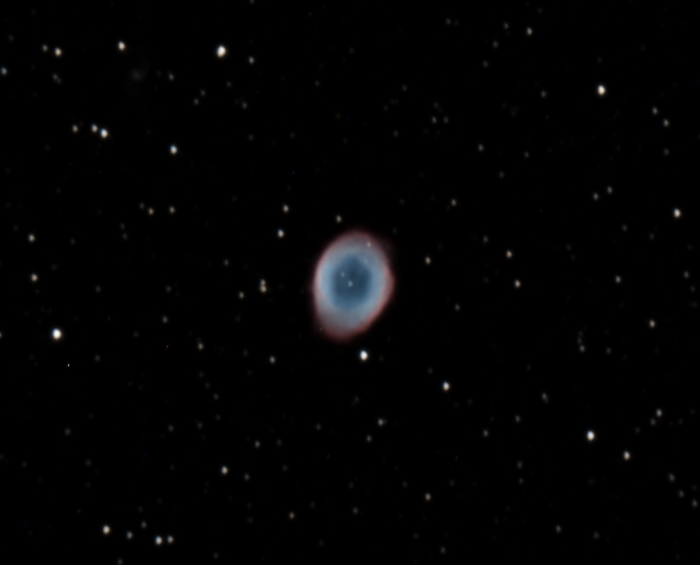Do these look like planets to you?

This is M27, the Dumbbell Nebula. First observed by Charles Messier in 1764, it was the first planetary nebula ever discovered. William Herschel coined the name “planetary nebula,” because M27 resembled his newly discovered planet, Uranus. Herschel’s son, John, thought it looked like a dumbbell.
M27 is 1,400 light years from us and has a visual magnitude of +7.5. That’s bright enough to easily see through a good pair of binoculars. But, finding it through binoculars might prove to be a little difficult. If you are up to the challenge, start by looking almost directly overhead for the Summer Triangle formed by three bright stars: Vega, Deneb, and Altair. M27 is about two-thirds of the way from Deneb to Altair, and slightly inside the triangle (towards Vega).

The Ring Nebula, M57, is another example of a planetary nebula. Like M27, it’s 1,400 light years away from us, but it’s a fairly small and much fainter nebula with a visual magnitude of +8.8. M57 was first discovered by Antoine Darquier de Pellepoix in 1779. Messier discovered it, (before he heard of Pellepoix’s discovery), a short time later, and entered it in his list of things that are not comets!
What you can look for in September’s Night Skies
Venus continues as the “Morning Star!” With a visual magnitude of -4.2, you won’t confuse it with anything else.
The evening skies still feature Jupiter, Saturn and Mars. Both Jupiter and Saturn rise before sunset. Just after sunset on September 1, Jupiter will be about 30° above the SE horizon. Saturn will follow slightly behind Jupiter, and the nearly full moon will lag behind the two planets. Mars rises at 9:42 p.m.
There are no major meteor showers in September, but there is a minor meteor shower. The Epsilon Perseids meteor shower peaks on September 10, and is visible for most of the month. Like last month’s major shower, the Perseids, the Epsilon Perseids are visible throughout most of the night. They are easy to locate, too. The Epsilon Perseids originate just east of the bright star, Capella. Capella begins the night rising in the NE at 10:15 p.m. You might be able to see some shooting star action at that time, but the early morning hours are the best time for viewing meteor showers. At 4:00 a.m., Capella and the Epsilon Perseids will still be in the NE, but they will be about 50° above the horizon.
Moon Phases:
1st Quarter is September 23
Full Moon is September 2
Last Quarter is September 10
New Moon is September 17


